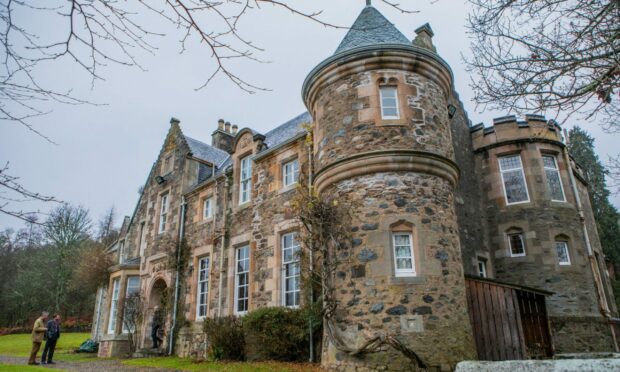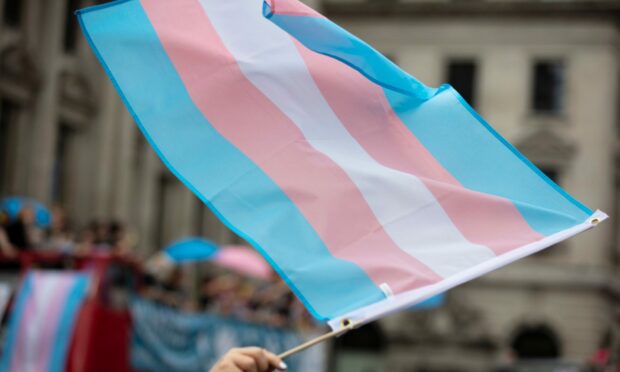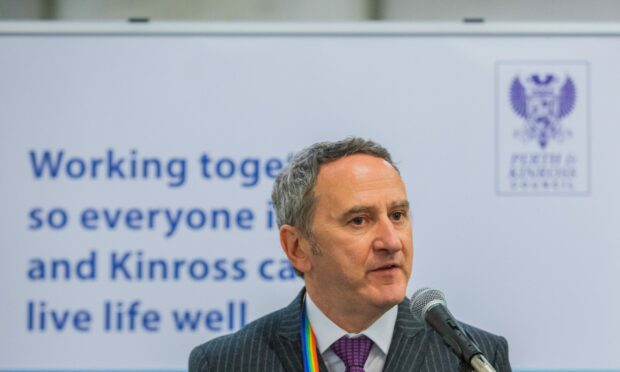A transgender teenager took their own life in Perth and Kinross after their cries for help went unheard by local services, The Courier can reveal today.
A probe into the circumstances surrounding the tragic death found the support received by the 17-year-old was too often “fragmented, inconsistent and uncoordinated”.
The pupil was found dead shortly after being told by education chiefs that they would not be allowed to attend the New School Butterstone for an extra year.
The suicide in February 2017 set in motion a breakdown in the turbulent relationship between Perth and Kinross Council and senior staff at the school, which controversially closed at short notice in November 2018.
Gender dysphoria
The “sensitive and intelligent” teenager had also become frustrated at the lack of progress to address their growing sense of gender dysphoria.
The newly-published report said the pupil had been referred for specialised treatment and possible gender re-assignment.
But the professionals involved later admitted they would have delayed the referral if they had been aware of the vulnerable teen’s history of self-harm and suicide attempts.
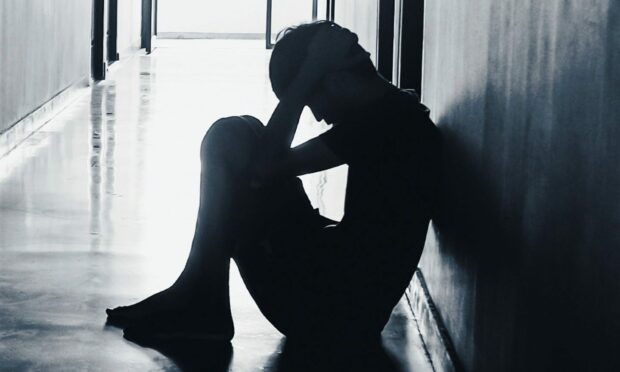
During the review, undertaken on behalf of Perth and Kinross child protection committee, some non-specialist staff spoke about “not feeling confident” when working with young people with gender dysphoria.
A total of 17 recommendations were made to improve services in the wake of the tragic death of the pupil, who is known in the report as “Young Person A”, including improved training for staff.
Distressing findings
The shock report’s findings include:
- The teenager’s “troubling” narrative was being listened to at the time but was not being properly heard or understood by officials
- Evidence of “silo working” among the more than 14 separate professionals supporting Young Person A
- Huge pressures on local Child and Adolescent Mental Health Services (CAMHS)
- Health staff had “incomplete picture” when referring the pupil for specialised treatment and possible gender re-assignment
- Strained relations between the education service and the family and school
- A lack of governance and oversight, or anyone acting as “named person”.
The study has been published just 12 months after a similar significant case review found a series of missed opportunities to protect a severely neglected pre-school child in Perth and Kinross.
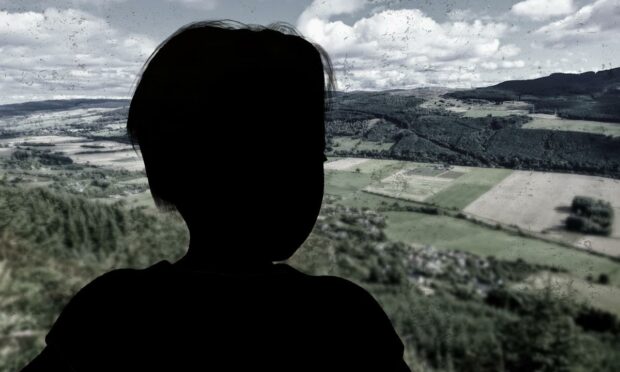
Known as “Child B” to protect their identity, the life of the youngster was only saved when a member of the public spotted their “deathly” pale complexion and alerted police.
What happened?
The new review focuses on the death of a 17-year-old in Perth and Kinross.
They had suffered “adverse childhood experiences”, been diagnosed with attention deficit hyperactivity disorder (ADHD) and autistic spectrum disorder.
After receiving a disrupted education at local authority schools in the area, the family successfully fought for the pupil to be sent to the independently-run New School Butterstone, winning an appeal against an initial objection from council education officials.
The report described how “extremely challenging” discussions were later held with the family over their wish for the teen to have an additional year’s placement at the school, beyond normal leaving age.
The council blocked the move and the 17-year-old, who had been absconding, self-harming and contemplating suicide, died a short period later.
Jim Martin CBE, who carried out an independent inquiry into the closure of New School Butterstone, previously criticised the delays to the significant case review into the death.
He said it showed a “considerable lack of respect” to the student’s family.
During the review, a number of failings were identified with the care and protection offered to the teenager.
‘Clear evidence of silo working’
At one point, the teen was being supported by more than 14 separate professionals across all health services and there was “clear evidence of silo working”.
The youngster was said to have been “repeatedly relaying a troubling and complex narrative to many agency professionals”.
The concerns were being “listened to at the time” but the officials involved later admitted they were not always being “properly heard and understood”.
The learning review report said: “Concerns were not always shared effectively with all key partners, as they were being considered in isolation.
“Cumulative concerns and escalating risks and needs were sometimes overlooked, or not recognised.
“At times, there was evidence of fragmented, inconsistent and uncoordinated multi-agency approaches.”
The review also said it was clear that professionals across all services and agencies were
working hard to ensure the teenager was getting the help needed.
Across Scotland, long waiting times for Child and Adolescent Mental Health Services (CAMHS) have been highlighted in recent years.
The report into Young Person A’s death said the local CAMHS service at the time was “under considerable pressure”, with an “ever-changing staff group, increasing referrals, long waiting times and workers were managing high caseload numbers”.
The professionals involved later admitted their approach to the 17-year-old was “very medicalised”, with each presentation responded to “individually, almost in isolation”, without the benefit of a “holistic assessment of risk and need”.
CAMHS had also referred Young Person A (YP A) to specialised health
and support services in relation to their gender dysphoria.
The report said: “Information sharing gaps between and within CAMHS, with these specialised health services and with other agencies resulted in an incomplete picture of YP A; particularly in terms of YP A’s self-harming, suicidal ideation and subsequent suicide attempts.
Gender re-assignment
“At the learning-together workshops, key staff within CAMHS and at the specialist health services agreed, had these concerns been fully known, they would have delayed YP A’s referral for specialised treatment and possible gender re-assignment at that time.”
Across services, there was said to be a “lack of governance and oversight”, with no obvious service fulfilling the role of the “named person”.
The report lists a series of improvements made to services in the area in the wake of the tragedy, including greater information-sharing, training, monitoring and advocacy arrangements.
Recommendations included checking guidance and training for working with young people with gender dysphoria and, if necessary, developing training that includes up-to-date research and information.
Thomas Glen, chairman of the Perth & Kinross Chief Officers’ Group and Perth & Kinross Council chief executive, said: “Only those families and loved ones who experience such a tragedy can appreciate the true impact of the unexpected death of any young person.
“For us as public servants such events will always be a matter of great concern and require us to consider the roles we play and what learning we can take.
“Our sincere sympathies go out to family and friends who have been directly affected by such an untimely loss.”
‘Extremely complex and very challenging’
Mr Glen added that it had been an “extremely complex and at times very challenging set of circumstances”.
The Chief Officers’ Group have acknowledged the findings and accepted all of the recommendations included in the report.
“We are assured about the amount of improvement work already undertaken across the partnership, however we are not complacent and will continue to receive regular updates via the child protection committee,” Mr Glen said.
Bill Atkinson, independent chairman of the Perth & Kinross Child Protection Committee, said: “This review has taken some considerable time to complete, due to a number of issues including the Covid-19 pandemic.
“However, it is vital we can continue to learn the lessons arising from reviewing our work in child protection that seeks to keep children and young people safe from harm.”
When life is difficult, Samaritans are here – day or night, 365 days a year. You can call them for free on 116 123, email them at jo@samaritans.org ,or visit samaritans.org to find your nearest branch.
